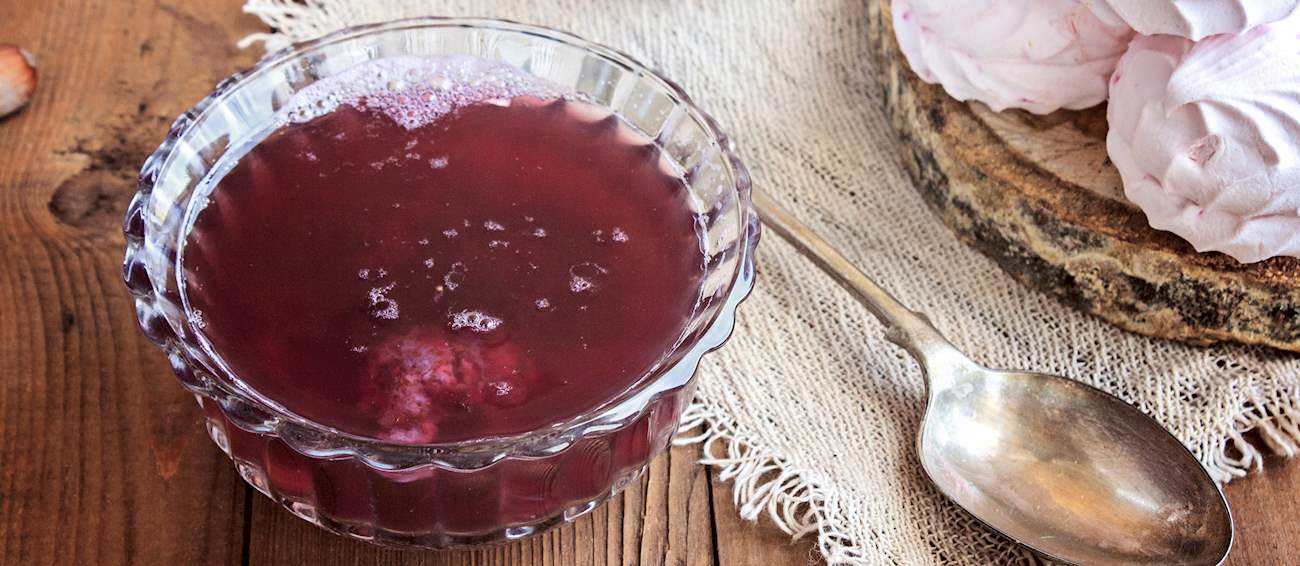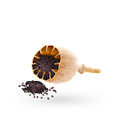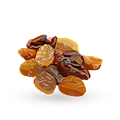MAIN INGREDIENTS
Kutia is a Ukrainian, Russian, Belarusian, and Polish sweet grain pudding that is traditionally served as part of a twelve-meal Christmas Eve supper. Interestingly enough, this festive treat is believed to have existed long before Christianity.
It is made with wheat, berries, honey or sugar, nuts, raisins, and poppy seeds. On Christmas Eve, before consuming the dish, a small bowl of kutia is traditionally placed outdoors as a bribe to Father Frost, then some of the kutia is tossed to the ceiling, and the number of grains that stick to the ceiling are used to predict next year's agricultural prosperity.
Mishka na severe or Bear in the North started as an iconic Soviet candy from Leningrad, but over time it's been made into a cake inspired by the candy's flavors. Although there's no standard recipe, and every household had its own version, the cake's layers are usually made with a combination of flour, sugar, sour cream, butter, cocoa powder, baking soda, vanilla, and salt, while the creamy filling that goes between the layers is made with sour cream, powdered sugar, and walnuts or hazelnuts.
Once assembled, the surface of the cake is covered with the remaining creamy filling, and it's then decorated with chopped nuts. After it has been well chilled, it's recommended to serve the cake with a cup of tea on the side.
MAIN INGREDIENTS
Kissel is an interesting fruit combination, often referred to as a dessert drink or soup, usually made with refreshing summer berries. It is prepared with water, mashed fruit or fruit juice, and thickening agents such as cornstarch or potato starch.
Kissel can be served hot or cold, and depending on the amount of starch, its consistency varies from liquid to firm and creamy. Liquid kissel is most often served as a drink, or a soup variation, when it is combined with sliced fruit and eaten with a spoon.
MAIN INGREDIENTS
Talkish kaleve is a traditional dessert originating from Tatarstan. These small pyramids are usually made with a combination of wheat flour, butter, honey, sugar, and water. The butter and flour are cooked in a pan, and the combination is then mixed with honey, water, and sugar.
The complicated process of making talkish kaleve involves chilling the mass until it thickens, and it's then stretched, folded, and stretched again until it splits into thin white fibers.. The fibers are placed in small cups and left to chill before they're taken out of the cups and served.
Zefir is a popular dessert prepared throughout the former Soviet Union, similar to marshmallows in texture and consisting of puréed apples or other fruits, pectin, and whipped egg whites. Because it contains virtually no fat, it is considered an extremely healthy treat.
This sweet treat comes in a variety of flavors such as cherry, strawberry, or cream, and it can be additionally coated in chocolate. It is believed that the dish is named after a light wind, referring to its light and airy texture. For the best experience, it is recommended to pair zefir with a cup of black coffee on the side.
Çäkçäk or chak-chak is a traditional dessert originating from Tatarstan. It's usually made from unleavened dough that's cut and rolled into small balls, and the balls are then deep-fried in hot oil. Dried fruits and hazelnuts are sometimes added to the dough.
Once fried, these small balls are stacked in a mound and drizzled over with hot honey. Once this sticky dessert cools, it can be garnished with dried fruits and hazelnuts, if desired. Çäkçäk is often made for special occasions such as weddings.
Limonnik is a refreshing Russian pie that is perfect for the summer heat. It is quite aromatic, and its taste is slightly sour due to the usage of crushed lemons with their peel intact. The pie is made with a shortcrust pastry shell that is filled with a combination of crushed lemons and sugar.
When it cools, limonnik is typically cut into squares and sprinkled with icing sugar. It is recommended to pair this flavorful pie with a cup of coffee on the side.
Guriev kasha is a traditional semolina porridge. Unlike more typical porridge varieties, Guriev kasha is not merely cooked in milk–instead, milk or cream is baked in the oven, and the crust which is formed on top is removed and used to separate the semolina layers.
Traditionally, layers of nuts, fruits, or jams are assembled between the milk crust and the semolina filling. Before serving, the dish is typically sprinkled with sugar and baked until a crispy skin is formed on top. There are two conflicting stories about the invention of Guriev kasha: one of the theories claims that the dish was invented by the Count Dmitri Guriev to celebrate the victory over Napoleon's army in 1812, while the other suggests that the dish was created by the chef of Count Guriev, who served kasha as a dessert and kept his recipe secret for a long time.
Prianik is a Russian sweet bread or a cookie that is flavored with spices such as cinnamon, ginger, cardamom, nutmeg, cumin, and anise. It is often filled with various fruit jams and caramelized or condensed milk. The first prianik was made only with rye flour, honey, and berry juice, while the spices were added later, by the 15th century.
Today, the sweet bread is typically served with tea or coffee and consumed as an afternoon snack.
Sukhariki are traditional Russian cookies made with a combination of flour, baking powder, salt, sugar, eggs, orange juice and zest, vanilla, walnuts, and raisins. The dough is shaped into flat logs, brushed with egg whites, sprinkled with sugar, then sliced and baked in the oven until golden brown.
It is recommended to serve these light and crisp Russian cookies with a cup of coffee or tea on the side.
TasteAtlas food rankings are based on the ratings of the TasteAtlas audience, with a series of mechanisms that recognize real users and that ignore bot, nationalist or local patriotic ratings, and give additional value to the ratings of users that the system recognizes as knowledgeable. For the “13 Worst Rated Russian Desserts” list until April 19, 2025, 2,426 ratings were recorded, of which 1,824 were recognized by the system as legitimate. TasteAtlas Rankings should not be seen as the final global conclusion about food. Their purpose is to promote excellent local foods, instill pride in traditional dishes, and arouse curiosity about dishes you haven’t tried.









